 |
||
|
||
| ||
Samsung releases TV-enabled smartphone — SGH-P705 Overclocking GeForce FX 5600 Ultra and 5900 Ultra or what do we get after removing the GPU cover BTX: a new motherboard form-factor (former Intel BigWater) Hush to offer a noiseless ATX case SiS760 — integrated solution for Athlon 64, Opteron Soltek EQ3702: a new Qbic barebone on nForce2 Samsung releases TV-enabled smartphone — SGH-P705 Samsung Electronics introduced a whole line of Palm, PocketPC and Symbian smartphones. SPH-i700 is a CDMA 2000 1X solution operating under Pocket PC Phone Edition and featuring Pocket Office installed. It weighs 180g, is sized 132x70x16mm, has 240x320 65K color display and 1050/2000mAh battery. The handset has 32Mb flash and 9Mb SRAM, PDA – 32Mb flash and 64 SDRAM. SGH-D700 is a GSM/GPRS handset operating under Symbian OS. Sized 89x49x26mm, the model has an MMC slot, a built-in VGA camera, 176x208 65K color display. The model also works as a VGA camera, voice recorder, MP3 player. SPH-i500 is one of the latest CDMA 2000 1X Palm OS terminals. It´s sized 54x87x21.5mm, has 162x176 65K display, 800/1100/1600mAh Li-Ion battery, 8Mb Flash ROM and 16Mb DRAM, MSM5100 & Dragonball 66MHz processor. The entertainment series includes SGH-E715 and SGH-P705 models. The former is a GSM/GPRS handset with a built-in camera, with LCD display acting as a viewfinder. SGH-E715
SGH-P705 The company calls this an "NTSC TV set with GSM/GPRS support".
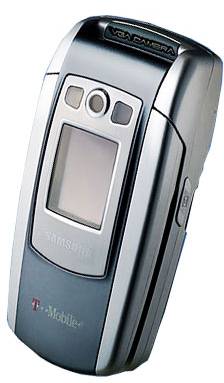
Overclocking GeForce FX 5600 Ultra and 5900 Ultra or what do we get after removing the GPU cover The latest news from our videolab: having decided to get deeper than usual tinkering with GeForce FX cooling systems, Andrey Vorobyev, our video section editor, removed the GPU covers that are actually decorative and tried to install the cooling system on the GPU core directly. The results were naturally stunning: under the cover there was a heat conducting layer that was nevertheless a thermal barrier in the entire cooling system. Below you can see the GeForce FX 5600 Ultra GPU on Albatron´s graphics card:
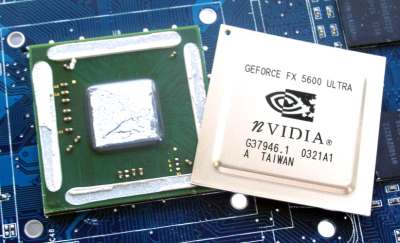 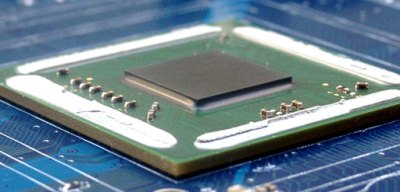 What do we get from the experiment? A lot with an accurately reworked cooling system for closer on-GPU installation. In the case above the default GPU/memory clock speeds were 400/800 MHz with up to 466MHz overclocking potential. After the redesign we were able to overclock GPU to 500MHz! We´ve done the same to ASUS V9950 on GeForce FX 5900 Ultra. But as the cooling system was common GPU and memory, we found out that heatsink doesn´t get close to the GPU because of the legdes for memory chips (see the close-up below.)
 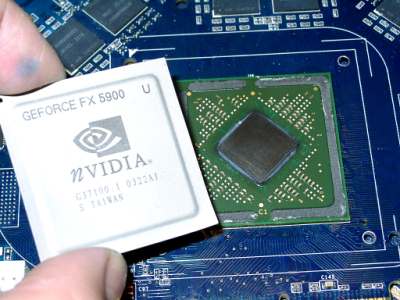 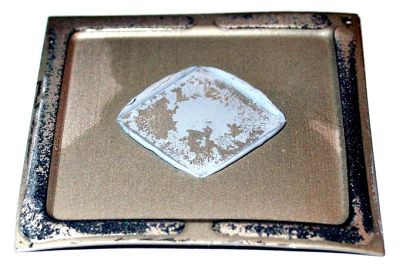 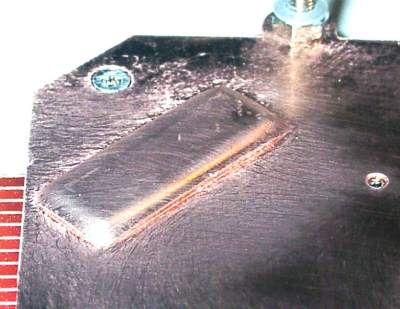 We just had to polish them to provide the better joint. But you can actually use the reference cooling that is separate for GPU and memory, as you know. After all this we raised the overclocking potential from 496MHz to 525MHz at 450MHz default clock, while the memory worked at up to 980MHz at the 850MHz default! I can hardly say what is the purpose of these literally undercover gaps. Perhaps, there´s some homespun truth we don´t know of. Anyway, our experiments showed GeForce FX 5600 Ultra and 5900 Ultra have rather high overclocking potential that gives more chances to their owners and also allows makers to produce more overclocker products in the future. :)
BTX: a new motherboard form-factor (former Intel BigWater) We continue to review the technologies for the first time announced at IDF Fall 2003. this time it’s about the new motherboard form-factor — Balanced Technology Extended (BTX) – former Intel BigWater that is to replace the usual ATX.
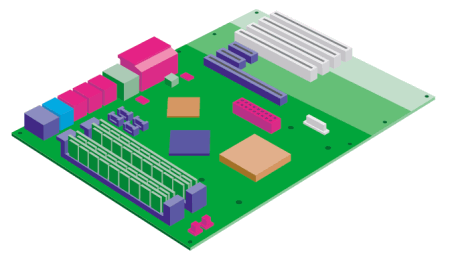 I guess noone doubts about the need to move to the new form-factor. New buses and interfaces come, requirements change, existing noisy PC cases become outdated. Well, for the sake of justice, I must mention that BTX will be backward compatible with usual cases, but anyway the thing is that the new form-factor will allow to move to some more accurate forms in the future. So, what should we get from BTX? This is what Intel states:
Everyone knows the difference between ATX, microATX and FlexATX. E.g. microATX boards can be installed into both microATX, and ATX cases. The BTX will support a lot more sizes and cases. Currently there are several BTX modifications that differ by board width: standard BTX (325.12mm), microBTX (264.16mm) and even lower-profile picoBTX (203.20mm). And, of course, new buses and interfaces like PCI Express, Serial ATA, etc. were considered during BTX development.
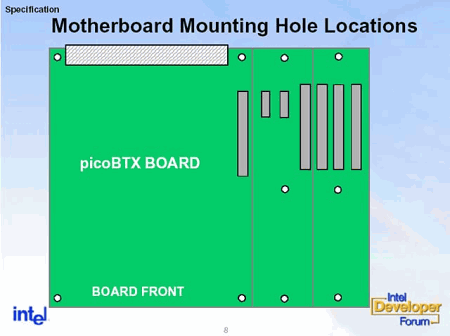 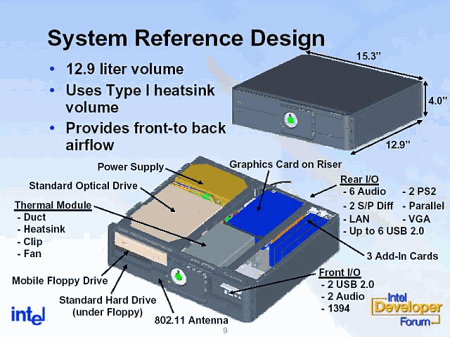 Naturally, MicroATX reminds MicroBTX and ATX resembles BTX. However, the picoBTX is a total innovation designed for PCI Express and new ExpressCard slots. Below is what typical BTX systems will look like:
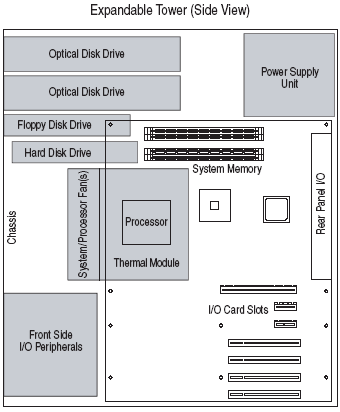 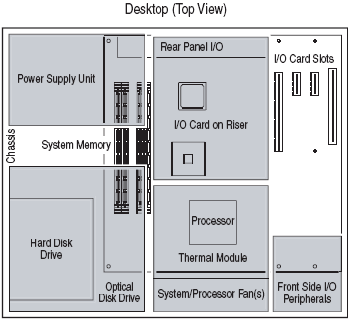 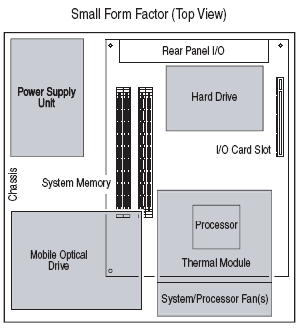 Boards will be mounted by SRM (Support and Retention Module) that will provide optimal cooling, especially for CPU. Besides, there’s another innovation – cooling systes are called Thermal Module in the BTX specs. They play the main role in heat rejection. In general, such a module will include a CPU cooling system and airflow "rails". Currently there are two module types are developed: full-size and low-profile.
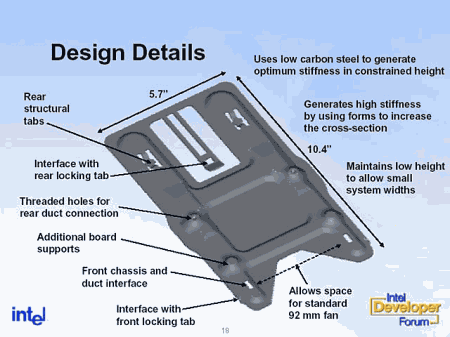 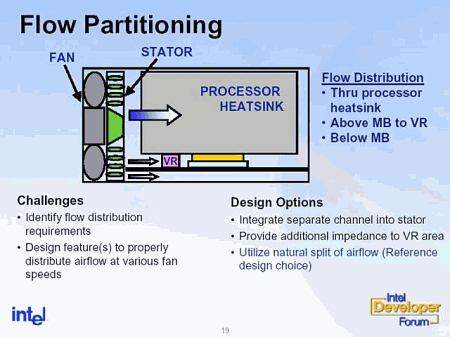 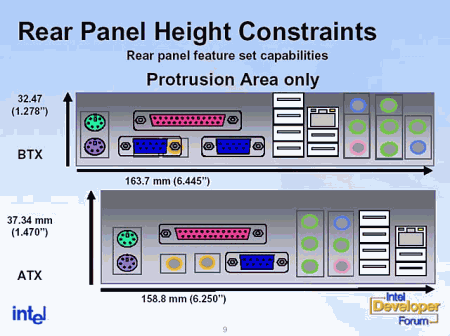 This is what the today’s concept, Big Creek BTX platform, will look like:
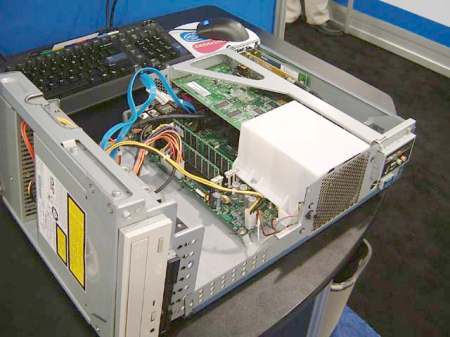 I’ll only add that the BTX form-factor should become topical in mid-2004. The complete BTX specs are in this document — The Balanced Technology Extended (BTX) Motherboard Interface Specification Revision 1.0.
Hush to offer a noiseless ATX case At COMPUTEX 2003 Hush Technologies is to offer a noiseless Hush ATX case for ATX, Micro ATX or Mini ITX systems.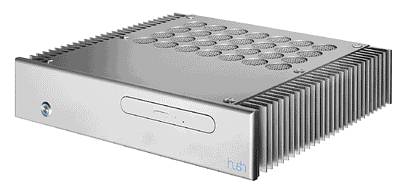 Key specs: Systems in new cases are expected to arrive for sale for 1050 euros late in October.
SiS760 — integrated solution for Athlon 64, Opteron After announcing of discrete SiS755 for AMD Opteron, Athlon 64 SiS unveils integrated solution, SiS760 (but the press release is dated September 24). Integrated graphic core is Ultra 256 Graphic Core with Pixel Shader v.1.3 and DirectX 9.0 support. 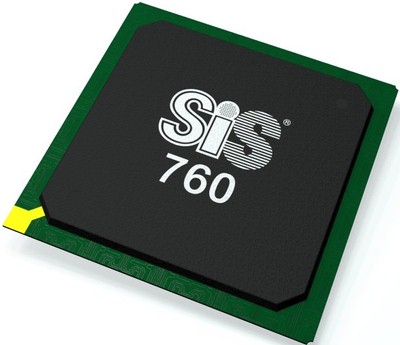 Here are the main features of the North Bridge:
The South Bridge is SiS964, so there is no difference with SiS755 in this point:
According to the table (Updated
info on AMD Athlon 64 chipsets) it is the last solution from SiS for the
CPUs. Soltek EQ3702: a new Qbic barebone on nForce2 These days one of the "barebone founders", Soltek , continued its successful Qbic series with a new Socket A Qbic EQ3702 on NVIDIA nForce2.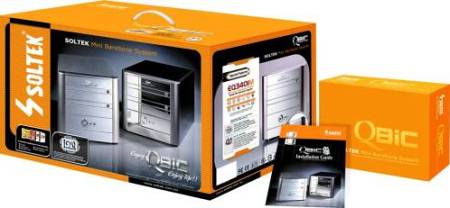 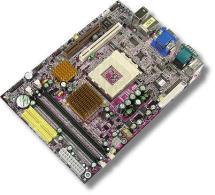
EQ3702 brief specs:
Besides Soltek Smart Fan, Soltek IcyQ, EQ3702 is bundled with Trend Micro PC-cillin 2002, PowerQuest PartitionMagic 6.0 SE, Drive Image 4.0, FarStone Virtual Drive 7 & RestoreIT 3.

Write a comment below. No registration needed!
|
Platform · Video · Multimedia · Mobile · Other || About us & Privacy policy · Twitter · Facebook Copyright © Byrds Research & Publishing, Ltd., 1997–2011. All rights reserved. |